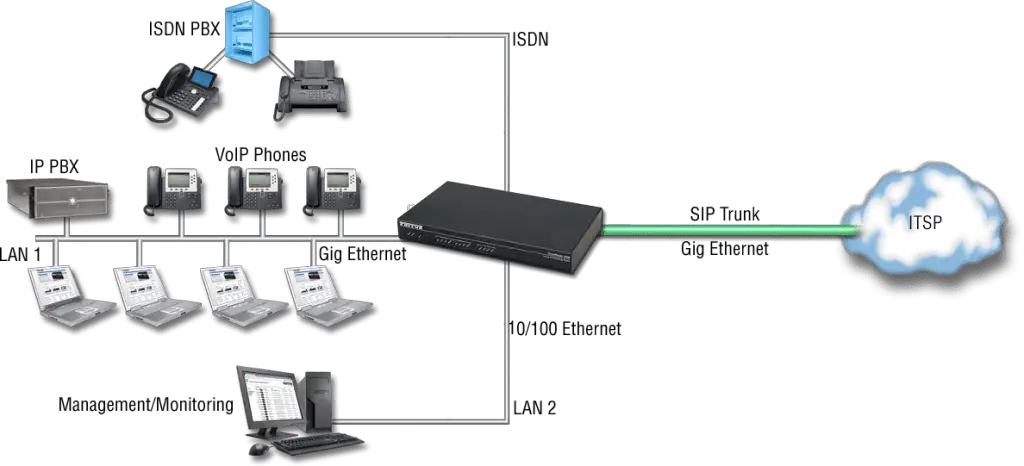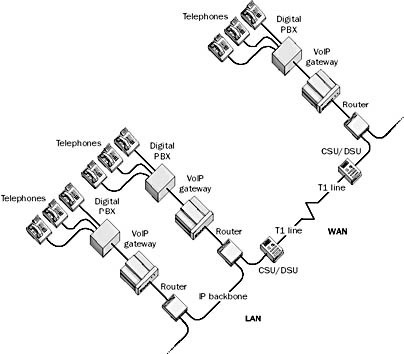Definition of VoIP Gateway in Network Encyclopedia.
What is VoIP gateway?
VoIP Gateway is a device that allows telephone calls to be transmitted over Internet Protocol (IP) backbone networks by converting voice signals into IP packets and transmitting them over the network. The reverse process takes place at the other end of the call.
How VoIP Gateway Works
Most VoIP gateways are chassis-based units that have either digital or analog built-in Private Branch Exchange (PBX) interfaces. A gatekeeper keeps track of IP address to phone number mappings for routing calls between gateways.

Built-in local area network (LAN) and/or wide area network (WAN) interfaces are included for connecting the gateway to the IP backbone. Some gateways also have built-in routing capabilities. The LAN interface is usually Ethernet, but some gateways support Token Ring. The WAN interface is typically T1 or E1, but smaller gateways designed for small office/home office (SOHO) environments support Integrated Services Digital Network (ISDN) interfaces.
The number of voice interfaces per chassis typically ranges from 72 to 960, depending on the vendor. Voice interfaces are typically the digital signal cross-connect level (DSX-1) type, but some gateways also support the foreign exchange station (FXS) type interfaces for direct attachment of analog telephones.
What to pay attention when you buy a VoIP Gateway
When you shop for a VoIP gateway, you should consider the following:
- Audio quality should be your primary consideration. The audio quality with low traffic congestion should be close to that of a digital PBX. With heavy traffic congestion, latency and jitter should remain low enough that voice quality is acceptable to average users. A packet loss of 15 percent or more results in transmission with borderline intelligibility; delays of over 700 milliseconds are unacceptable to most users.
- Find out what extra features are supported by the gateway, such as dialed number identification service (DNIS) for call routing, automatic number identification (ANI) and caller ID for identifying the incoming caller, and interactive voice response (IVR) for creating telephone menus.
- VoIP gateway technologies are still evolving, so equipment from different vendors might not interoperate, even if the vendors claim to support the H.323 standards of the International Telecommunication Union (ITU). You should, therefore, buy VoIP from a single vendor, especially if you have an enterprise implementation with many gateways.
- If you are concerned about eavesdropping on voice conversations on IP networks such as the Internet, be sure that your gateways support the H.245 encryption standard. The alternative practice of using a virtual private network (VPN) gateway to encrypt VoIP traffic usually results in additional incompatibility problems. Also be aware that it is difficult to configure a VoIP gateway to operate across a firewall that hides network IP addresses using network address translation (NAT), especially if the traffic is encrypted.
